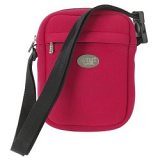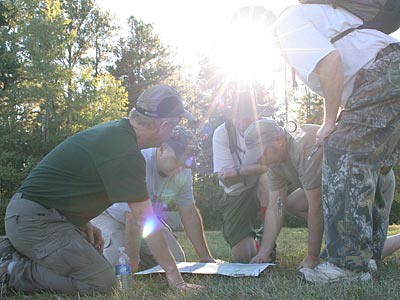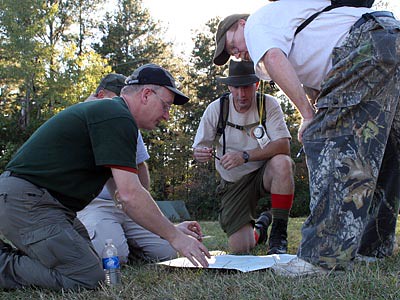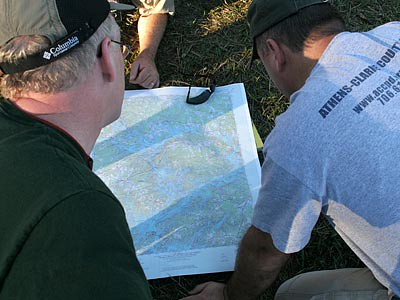
Here's how I did it, in general terms. I put the camera on a tripod and set it so it would properly expose the shot without the flash, but had the flash fire anyway. As soon as the flash fired, the kids walked out of the picture. The flash illuminated the kids, and the rest of the scene was illuminated with the natural lighting through a long exposure.
Now for the specifics. With the camera on a tripod, I set the film speed to the lowest setting (ISO 100 for my Canon 20D). Then I put the camera in manual mode and set it to 3.2 seconds for the shutter speed and f5.6 for the aperture. You may need to play around with the aperture and shutter speeds to see what works best for your situation -- f5.6, ISO 100, and 3.2 seconds worked for my lighting situation, but may not for you.
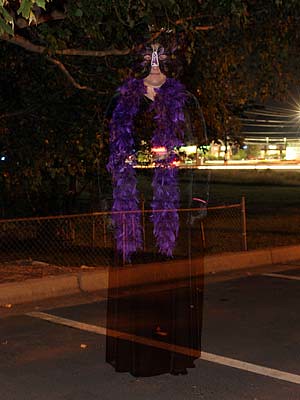
I was taking the photos in our church's parking lot after a Halloween Party. They posed under an oak tree, which helped shade the light from the parking lot lights. I positioned the kids where the illuminated signs were directly behind them.
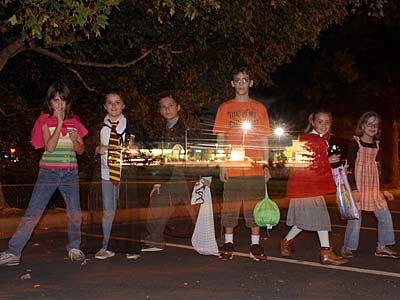
You need to do something similar. Find a dark place without much light (but enough to see). Figure out how long the exposure needs to be. The idea works better with dark clothing instead of light (light-colored clothing will possibly streak as the subject walks away). Finally, have something bright or light-colored behind the subjects so it will easily shine through their bodies, creating the illusion that they are ghosts.
Be prepared to experiment some to find what works best. And most of all, have some fun!
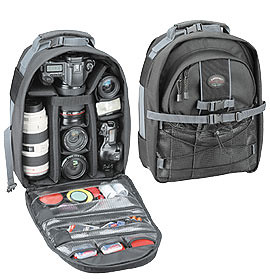 I personally use the Tamrac 5375 Photo Backpack. It is rugged, padded, and has plenty of storage for two cameras, a flash, and four lenses. I can also pack it with two spare camera batteries, eight spare flash batteries, several memory cards, and a bunch of odds and ends.
I personally use the Tamrac 5375 Photo Backpack. It is rugged, padded, and has plenty of storage for two cameras, a flash, and four lenses. I can also pack it with two spare camera batteries, eight spare flash batteries, several memory cards, and a bunch of odds and ends.